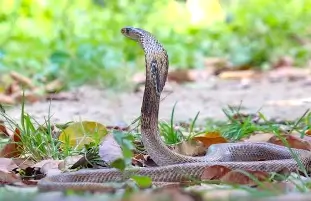
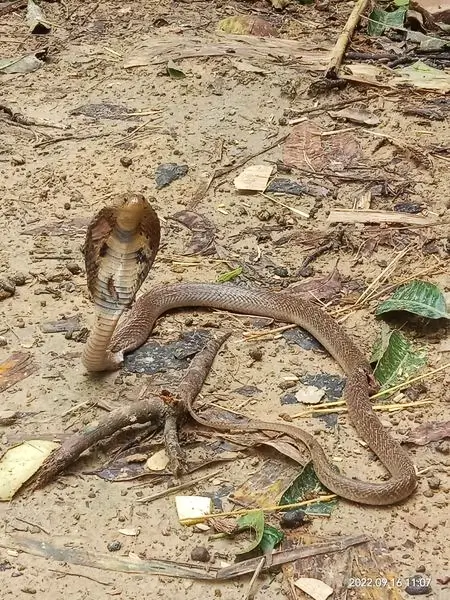

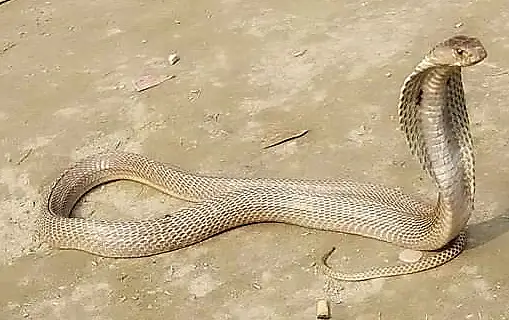
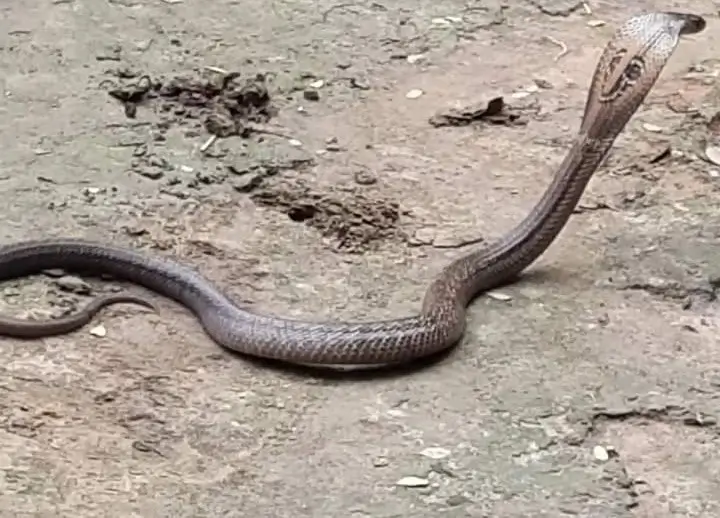
Scientific Name: Naja Naja
Other Names: Spectacled Cobra, Binocellate Cobra
Status: Near Threatened
Distribution: Throughout the country

Type: Elapid
Active Time: Nocturnal
Total Length: 150 – 200
Habitat: Dense or open forest, plains, agricultural lands, populated urban areas, rocky terrains, wetlands. Altitude less than 2000 m.
Food Habitat: Mostly feed on rodentsm frogs and lizards. Sometimes hunts other snakes.
Reproduction: Oviparous, lays 10 – 30 eggs. Lays them at rat or termite holes and incubates. Eggs hatch after 48 – 69 days and hatchlings are 20 – 30 cm long.
Medical Importance: This snake is medically important. Highly venomous snake with high fatality rate at Bangladesh. According to SC LD50 value it ranks 4 among all venomous snakes found in the country. SC LD50 value is 0.22 – 0.84 mg/kg. This snake has high venom yeild, maxium 610 mg (3); commonly 169 – 250 mg. Like all elapids they have neurotoxin as main venom.
Identification Tip: The easiest way to indentify spectacled cobra is their hood mark at the back of the hood. Which is V shaped almost all the time. The mark changes shape due to genetic mutaion but still keeps the V shape. Rarely the mark changes completely. Another way is their round wide hood.
Scalation:
Dorsal scales are smooth and strongly oblique. Midbody scales are in 23 rows (21–25), with 171–197 ventrals. There are 48–75 divided subcaudals and the anal shield is single. There are seven upper labials (3rd the largest and in contact with the nasal anteriorly, 3rd and 4th in contact with the eye) and 9-10 lower labials (small angular cuneate scale present between 4th and 5th lower labial), as well as one preocular in contact with internasals, and three postoculars. Temporals are 2 + 3.
Description:
This species has a head that is elliptical, depressed, and very slightly distinct from the neck. The snout is short and rounded with large nostrils. The eyes are medium in size and the pupils are round. The Indian Cobra varies tremendously in colour and pattern throughout its range. The ventral scales or the underside colouration of this species can be grey, yellow, tan, brown, reddish or black. When threatened, they rears up and flattened and widened their neck to form round hood. Juveniles are much more aggressive than adults.
Spectacled Cobra can be confused with Monocled Cobra or Indian rat snake. Hood of Monocled Cobra is less wide and Indian rat snake does not rear up as well as nonvenomous. Like all elapids they have small, fixed and frontal fangs. Spectacled Cobra is a protected species in Bangladesh under wildlife act of 2012.
They tend to avoid human and bite as much as they can. They have good rate of providing false bites and dry bites. While false bite they will through their head and tough the opponent’s body but they will not use the fangs. If they envenomate, it will be a significant medical case. As all elapids, they contain neurotoxin as main venom as well as few amount of cardiotoxin.
The most common superstition about Spectacled Cobra is cobra pearl or nagmani. Nagmani does not exist. People say cobras take care hidden treasures. Snakes do not have that kind of advanced brain. People say, cobras dance by moving their hood with the music played by snake charmers. Snakes do not have well-functioned hearing organs. They copy the movement of the flute moving by the snake charmers.
Related Blog: This is the blog title
References:

Species: Naja Naja
Genus: Naja
Family: Elapidae
Sub-Order: Sperpentes
Order: Squamata
Class: Reptilia

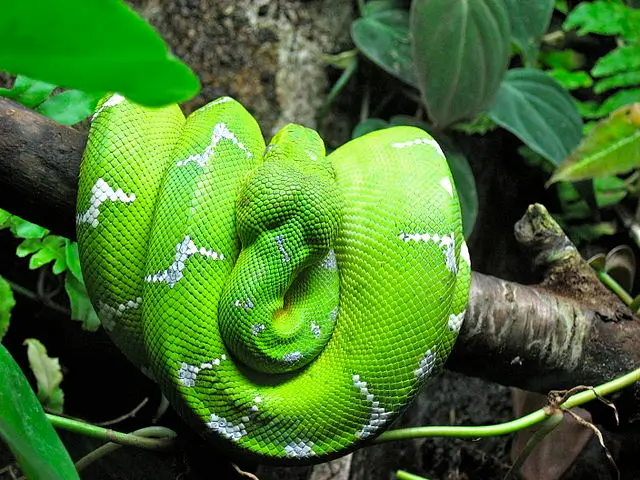





© Copyright DESCF 2024. All Rights Reserved.